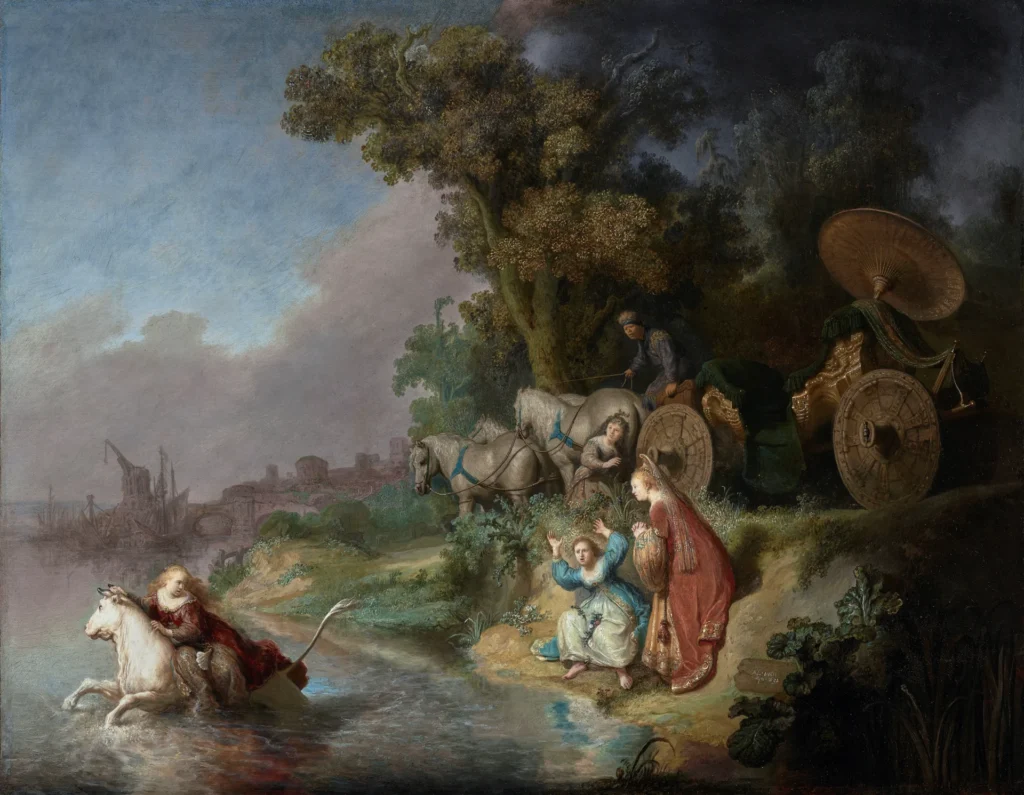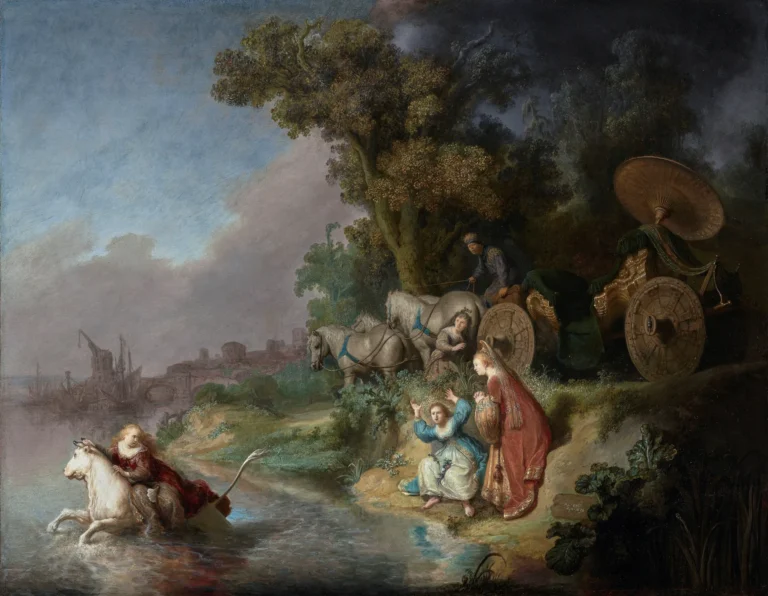The Abduction of Europa
Created in 1632, The Abduction of Europa is a stunning oil painting by Rembrandt that illustrates the mythological story of Europa, as told in Ovid's 'Metamorphoses'. In a striking High Baroque style, Rembrandt captures a moment of intense emotion and drama, depicting the princess's abduction by Zeus, who is transformed into a bull. The artwork's contemporary Dutch elements, including modern clothing and a cityscape backdrop, serve to bridge the ancient myth with Rembrandt’s own time, allowing for a unique reimagining that resonates with his audience.
Year 1632
About the Artwork
Did You Know
Liked what you see? Add it to your collection.
Enjoyed reading? Share it.
... continued
The Abduction of Europa by Rembrandt van RijnMedium and Location
The painting is executed in oil on a single oak panel and is currently housed at the J. Paul Getty Museum in Los Angeles, California.
Subject and Inspiration
The painting depicts the mythological scene from Ovid's 'Metamorphoses,' where Zeus, disguised as a bull, abducts the princess Europa. The scene shows Europa being carried away through the water by the bull while her friends on the shore express horror.
Style and Technique
The work is characterized by Rembrandt's use of the High Baroque style, marked by dramatic lighting, intense human emotions, and a blend of classical and contemporary elements. The painting features a coastal scene with detailed reflections in the water, textured vegetation, and the contrast of dark trees against light skies. Rembrandt's use of light and shadow adds to the sense of movement and energy in the scene.
Unique Elements
Rembrandt differentiated his work from other interpretations by setting the scene in a contemporary Dutch context. The figures wear clothing from Rembrandt’s time, and the background includes modern elements such as a crane and an industrial cityscape reminiscent of Amsterdam. This anachronistic mix of Greek mythology and contemporary setting makes the story more relatable to his Dutch audience.
Patronage and Allegory
The painting was likely commissioned by a patron, possibly Jacob Specx, who was involved in international trade. The work includes allegorical elements, such as the bull representing both the god Zeus and a ship, and the harbor in the background symbolizing the busy trading ports of Tyre and Europe. This reflects the patron's interests and the broader themes of trade and cultural exchange.
Influence and Comparisons
Rembrandt's work was influenced by Italian artists, particularly Titian, who had painted a similar scene nearly seventy years earlier. However, Rembrandt's version is less violent and more focused on the emotional and dramatic aspects of the scene, with a more realistic and familiar setting for his Dutch audience.










